Q
how to connect perodua bezza bluetooth
The Honda Civic Type R is currently priced between around RM300,000 to RM350,000 in Malaysia. Exact figures can vary depending on the spec, optional extras, and any dealer promotions going on. Under the hood, this hot hatch packs a 2.0-liter VTEC turbo engine kicking out 320 horsepower, mated to a 6-speed manual gearbox. It also comes with a front limited-slip differential and adaptive dampers, making it a absolute blast to drive with seriously sharp handling.
For Malaysian car enthusiasts, the Type R isn't just a symbol of Honda's performance heritage – it's also one of the few high-performance cars in its class that still offers a manual transmission, which is a big deal for driving purists. It's worth noting that the Type R is sold here as a fully imported (CBU) model, so that explains why it's pricier than locally assembled options.
If you're thinking about getting one, your best bet is to hit up an authorized Honda Malaysia dealer directly. They can give you the latest quotes, arrange a test drive, and walk you through after-sales service packages and warranty details. Sure, there are rivals like the Volkswagen Golf R in the same segment, but the Type R's unique driving thrills and Honda's strong brand reputation in Malaysia mean it's got a solid fan base that swears by it.
Special Disclaimer: This content is published by users and does not represent the views or position of PCauto.
Related Q&A
Q
What is the fuel consumption of Perodua Bezza 2018?
The fuel efficiency of the 2018 Perodua Bezza varies depending on the engine configuration. The official fuel consumption figure for the 1.0-liter 1KR-VE three-cylinder engine is 22.8 km per liter (approximately 4.39 liters/100 km), while the 1.3-liter 1NR-VE four-cylinder version delivers 21.3 km per liter (around 4.69 liters/100 km). These figures are based on Malaysian road standard test conditions, and actual fuel consumption may vary slightly depending on driving habits, road conditions, and vehicle maintenance status. As an entry-level sedan focused on affordability and practicality, the Bezza's fuel-saving performance benefits from its lightweight body design and efficient engine tuning, making it particularly suitable for city commuting. To further optimize fuel efficiency, it's advisable to keep up with regular maintenance, use the appropriate viscosity oil, and avoid aggressive driving behaviors like rapid acceleration or sudden braking. In the same vehicle class, fuel efficiency is typically influenced by factors such as engine technology, body weight, and transmission matching, so it's worth comparing the technical features of different brands when making a purchase decision.
Q
What engine is in the 2018 Bezza?
The 2018 Perodua Bezza comes with two naturally aspirated engine options: a 1.0-liter and a 1.3-liter. The 1.0-liter 1KR-VE three-cylinder engine puts out 51 kW of maximum power and 91 Nm of peak torque, while the 1.3-liter 1NR-VE four-cylinder unit delivers 73 kW of max power and 121 Nm of peak torque. Both engines are paired with either a four-speed automatic transmission or a five-speed manual gearbox to suit different driving preferences. These engines are known for their fuel efficiency and reliability, making them especially good for city commuting. The 1.3-liter version stands out with better performance, ideal for drivers who want a bit more pep. The upside of naturally aspirated engines here is their simple construction and low maintenance costs, perfect for budget-conscious buyers who value practicality. Plus, both engines met the emission standards back then, showing Perodua's solid tech in the small car segment. If you're looking at a used Bezza, the 2018 model's engine is steady and routine upkeep is easy, making it a really good value pick.
Q
Is Bezza safe?
The Perodua Bezza, one of Malaysia's best-selling entry-level sedans, delivers safety features that are pretty much par for the course in its price bracket. The base models come with dual airbags, ABS with EBD, while the higher trims step things up with active safety kit like VSC (Vehicle Stability Control) and TRC (Traction Control). It scored a 4-star rating in ASEAN NCAP crash tests, which means the body structure offers decent protection in a collision.
Now, it's worth keeping in mind that the Bezza is a lighter car with a front-wheel-drive layout. That can make it feel a bit less planted than more premium models at higher speeds or on slippery roads, so keeping a sensible speed and leaving a good safety gap is always a smart move.
For budget-conscious buyers, the Bezza's safety package covers the basics for city driving just fine. But if you want a bit more peace of mind, adding extras like rear parking sensors or a dashcam wouldn't hurt. And with Malaysia's rainy weather, don't sleep on tire maintenance—regularly checking tread depth and pressure goes a long way in keeping you safe. After all, even the best safety systems rely on good tire grip to work properly.
Q
Is Perodua a Toyota brand?
Perodua isn't actually a Toyota brand, but there's definitely a tight-knit partnership between the two. Perodua's Malaysia's homegrown automaker, founded back in 1993, while Toyota needs no introduction as the famous Japanese automotive giant. When it comes to tech, parts supply, and manufacturing, Perodua has deep-rooted collaborations with Toyota and its subsidiary Daihatsu. Take their models, for example—several Perodua vehicles ride on Daihatsu platforms and use their powertrains. On the flip side, Toyota has also rolled out models in Malaysia that share production lines with Perodua, like the Toyota Rush and Perodua Aruz, which are platform twins. This kind of collaboration is pretty standard in the auto industry; it helps local brands cut costs and boost their technical know-how, while letting international players better adapt to the local market. For Malaysian consumers, Perodua cars are usually known for being budget-friendly and cheap to maintain, whereas Toyota stands out for its reliability and global after-sales network. Both have their strengths, so buyers can pick the one that best fits their needs.
Q
Does Bezza save fuel?
Yeah, the Perodua Bezza has definitely made a name for itself as a fuel-sipper, perfect for zipping around Malaysia's daily commutes. Under the hood, you'll find those efficient 1.0L and 1.3L Dual VVT-i engines, and paired with its lightweight build, the official figures say it can sip as little as around 4.0 liters per 100 kilometers. In real-world driving, if you keep a steady throttle and stick to sensible speeds, you can even nudge that fuel efficiency a bit further. Plus, the Bezza comes with this ECO driving mode indicator to help you get into more economical habits behind the wheel. For folks who prioritize fuel economy, it's a solid pick.
In the Malaysian market, rivals like the Proton Saga also put up a good fight when it comes to miles per liter, but the Bezza's compact size and tried-and-tested powertrain really shine when you're navigating city streets. My advice? Before you sign on the dotted line, check out the Malaysian Energy Efficient Vehicle (EEV) certifications and think about how you actually drive. Oh, and don't sleep on regular maintenance and keeping those tires properly inflated – they can make a big difference to how much fuel you end up burning, too.
Q
Is Bezza good for long distances?
The Perodua Bezza, one of Malaysia's top picks for budget-friendly sedans, is worth a look if you're thinking about long drives. Now, both the 1.0L and 1.3L engines are all about saving fuel, but the 1.3L Dual VVT-i paired with that 4AT gearbox? It does a better job keeping power steady when you're cruising on the highway. And with an official fuel consumption figure of 22.5km/L, those long trips won't hit your wallet as hard at the pump.
Safety-wise, it's got a solid ASEAN NCAP 5-star rating, so your passengers are covered. The boot's a real standout too – 508 litres is plenty to swallow all the family luggage for a road trip. That said, the cabin insulation is on the thinner side, so you will notice more wind noise once you pick up speed. A quick tip: keep an eye on your tyre pressure and cooling system regularly to make sure it stays reliable for those longer hauls.
For families on a tight budget who need to clock up the kilometers between states, the Bezza makes a lot of sense. It delivers where it counts: fuel efficiency, space, and the basic safety kit. If a quieter ride is high on your list, though, you might want to think about adding some aftermarket sound deadening strips or maybe stepping up to a higher-spec model.
Q
Is Bezza using a Toyota engine?
The Perodua Bezza doesn't actually use Toyota engines. Instead, it's powered by Perodua's own in-house developed 1.0L and 1.3L DVVT engines. These belong to Perodua's EEV (Energy Efficient Vehicle) lineup and feature Dual Variable Valve Timing technology, which is all about boosting fuel efficiency while still delivering decent power. The 1.0L puts out 67PS, and the 1.3L ups that to 94PS. You can pair either engine with a 4-speed automatic or a 5-speed manual gearbox.
Now, even though Perodua and Toyota do have a partnership and share some tech platforms on certain models, the Bezza's engines are strictly Perodua-designed and built – no direct Toyota engine swaps here. For Malaysian buyers, the Bezza's main draws are its affordability and practicality. It really shines as a city runabout or a family car. Plus, Perodua's got a solid after-sales network across the country, so getting it serviced or repaired is pretty hassle-free.
If you're into engine tech, it's worth diving deeper into how DVVT works. Basically, it optimizes when the valves open and close, which in turn ramps up engine efficiency. It's a common fuel-saving tech you'll find in lots of car brands these days.
Q
Is Perodua Bezza worth buying?
The Perodua Bezza, one of Malaysia's best-selling entry-level sedans, is definitely worth a look – especially if you're on a tight budget but still want something practical. Under the hood, you've got two efficient engine options: 1.0L and 1.3L, both packing Dual VVT-i tech. Fuel economy is a real strong suit here; official figures claim the 1.0L model sips fuel as low as 21.1km/L, making it perfect for city driving. Inside, it's surprisingly roomy for its class, and that 508-liter trunk? More than enough for your average family's daily grind.
Safety-wise, all Bezzas come standard with ABS+EBD, dual airbags, and ISOFIX child seat anchors. Step up to the higher trims, and you'll even get Vehicle Stability Control (VSC) and Traction Control (TRC) – nice to have. The interior is mostly hard plastics, sure, but that's par for the course at this price point, and the build quality feels solid enough. The infotainment system covers the basics too, with Bluetooth and USB connectivity.
A big plus for Perodua is their widespread after-sales network, which means servicing and repairs won't break the bank – that makes it a solid long-term value proposition. When you factor in resale value, the Bezza also holds its own against rivals, which is a big bonus if you think you might upgrade down the line.
Now, if you're craving more power or a fancier spec sheet, you might need to stretch your budget a bit. But when you balance price, fuel efficiency, space, and the brand's reputation for reliability, the Bezza remains a seriously competitive choice in the Malaysian market.
Q
How much is Bezza 2020 in Malaysia?
The 2020 Perodua Bezza's pricing in Malaysia varies depending on the trim and specs. The base 1.0L Standard G with a manual gearbox starts around RM34,000, while the range-topping 1.3L Premium X with auto transmission goes for about RM50,000. Of course, actual prices might fluctuate a bit based on dealer promotions or, for used models, their overall condition.
This little econobox has made a name for itself with its impressive fuel efficiency and practical nature. Under the hood, you'll find either a 1.0L or 1.3L engine, and it comes packed with safety features like VSC (Vehicle Stability Control) – making it a solid pick for budget-conscious families or first-time car buyers.
It's worth pointing out that the 2020 model is a facelift, so it gets some nice upgrades over the earlier versions. Think things like a newly designed front bumper and fresh wheel designs to keep it looking current.
If you're shopping the used car market, keep in mind that mileage and service history will really affect the asking price. I'd definitely recommend checking out Perodua's official certified pre-owned channels or reputable platforms to get real-time market rates. And don't forget to cross-shop with competitors like the Proton Saga – it never hurts to compare before making your final decision!
Q
What Segment is Perodua Bezza?
The Perodua Bezza is a four - door sedan in the A - segment. It is mainly targeted at entry - level buyers in the mid - to low - price range in the Malaysian market, emphasizing affordability and low fuel consumption. Its body size (with an overall length of 4,150 mm) is smaller than that of B - segment sedans like the Toyota Vios and Honda City. However, it has an edge in price, starting from around RM34,000, which meets the local consumers' demand for a cost - effective commuter car.
Despite its relatively small size, the Bezza still offers engine options of 1.0L (1KR - VE) and 1.3L (1NR - VE), making it suitable for city commuting. It is easier to handle and park on congested roads, such as those in the Kuala Lumpur city center. Its competitors in the same segment include the Proton Saga (an A - segment sedan), while the higher - end B - segment market is occupied by Perodua's own Aruz (an SUV) and Daihatsu/Toyota models.
Although it may not stand out in terms of size and power, the Bezza remains one of the best - selling A - segment sedans in Malaysia, thanks to its low maintenance costs and the high resale value of the Perodua brand.
Popular Cars
Model Year
Car Compare
Car Photo
Latest Q&A
Q
Why is gasoline a fuel?
Gasoline can serve as a fuel because it possesses core properties suitable for providing power and the ability to convert energy. It is a hydrocarbon mixture obtained through fractional distillation and cracking of petroleum, mainly containing C5-C12 aliphatic hydrocarbons, naphthenes, and a small amount of aromatic hydrocarbons. It is characterized by volatility and flammability, with low viscosity facilitating smooth flow in injection systems, and rapid evaporation enabling quick formation of a uniform combustible mixture with air. Gasoline stores chemical energy; when ignited by a spark plug in the engine combustion chamber, it burns rapidly to release a large amount of thermal energy, which pushes the piston to move and converts into mechanical energy, providing power for vehicles such as cars and motorcycles. In addition, the anti-knock property of gasoline (measured by octane number) can adapt to engines with different compression ratios, ensuring stable operation and performance; it has a high energy density, storing more energy per unit volume, good combustion efficiency, and high availability of gas stations for convenient use. Therefore, it has become the main fuel for spark-ignition internal combustion engines and is widely used in transportation and related fields.
Q
What are 1st, 2nd, and 3rd family gases?
The first, second, and third family cars are vehicle categories classified based on the stages of family car-purchasing needs. The first family car is an entry-level economical model, such as the Perodua Axia and Proton Saga, priced at approximately 30,000 to 50,000 Malaysian ringgit. It emphasizes fuel efficiency and practicality, making it suitable for young families purchasing a car for the first time. The second family car falls into the mid-range category, offering more space and enhanced features, such as the Proton Persona and Toyota Vios, priced between 60,000 and 100,000 Malaysian ringgit, catering to the comfort requirements of growing families. The third family car is a premium model or an MPV/SUV, such as the Proton Exora and Honda CR-V, priced above 100,000 Malaysian ringgit. It boasts spacious interiors and upscale configurations, ideal for larger families or long-distance travel. Malaysian consumers typically prioritize fuel efficiency, maintenance costs, and space when selecting a vehicle. Families at different life stages adjust their car choices accordingly. For instance, small families may begin with the first category, upgrade to the second after having children, and larger families often opt for the third category.
Q
What are the four types of natural gas?
Natural gas can be classified into four main types based on its source: gas field gas (pure natural gas), associated petroleum gas, condensate field gas, and coalbed methane. Gas field gas is directly extracted from gas wells, typically containing over 90% methane with minimal impurities. Associated petroleum gas is a byproduct of oil extraction, containing not only methane but also significant amounts of other hydrocarbons such as ethane and propane. Condensate field gas yields light hydrocarbon fractions during extraction, characterized by a high methane content and small quantities of heavier hydrocarbons like pentane. Coalbed methane is extracted from underground coal seams, primarily consisting of methane and nitrogen, and must have a methane content exceeding 40% to be utilized as fuel. Due to compositional differences, these natural gas types vary in calorific value and applications. The first three are commonly used for urban gas supply, whereas coalbed methane requires purification before effective utilization. As a clean and efficient energy source, the development and utilization of these diverse natural gas types play a crucial role in optimizing energy structure.
Q
What are the three types of fuel gas?
Common fuel gases are mainly divided into three types: natural gas, liquefied petroleum gas (LPG), and manufactured gas. Natural gas is a flammable gas existing in nature, with methane as its main component. It is colorless and odorless, leaves no residue after combustion, and has high thermal efficiency, making it a clean energy source. Liquefied petroleum gas is a by-product of the petroleum refining process, whose main components include propane and butane. It is a gas at room temperature but can be converted into liquid through pressurization and cooling, facilitating storage and transportation. Manufactured gas is generated through thermochemical reactions of fossil fuels such as coal or petroleum under specific conditions, with main components including hydrogen, carbon monoxide, and methane. It has low production costs but produces certain pollution after combustion, so ventilation should be ensured during use. These three fuel gases have different application scenarios in the energy supply field, and their calorific values and usage characteristics also vary. For example, the calorific value of natural gas is approximately 33,000-36,000 kcal per cubic meter, that of LPG is about 90,000 kcal per kilogram, and that of manufactured gas is roughly 3,500-4,200 kcal per cubic meter. The different calorific values make them suitable for different energy demand scenarios such as households and industries.
Q
Is unleaded petrol a gas?
Unleaded gasoline is not a gas but a liquid fuel. It refers to gasoline with a lead content of less than 0.013 grams per liter and without the addition of tetraethyl lead as an anti-knock additive during the refining process. Its octane rating is typically 95, slightly lower than the 97 of leaded gasoline. The use of unleaded gasoline can effectively reduce emissions of harmful substances such as hydrocarbons, carbon monoxide, and nitrogen oxides in vehicle exhaust, thereby lowering pollution risks including smog, toxic gases, and acid rain. However, it should be noted that while unleaded gasoline contains no artificially added lead, it still retains trace amounts of lead from crude oil. Additionally, its combustion releases gases, particulate matter, and condensates, with particles smaller than 2 microns in diameter being particularly prone to prolonged suspension in the air and subsequent human inhalation. Thus, potential health impacts remain a concern. Currently, most vehicles can use unleaded gasoline directly, though certain models require selecting the appropriate octane grade as recommended by the manufacturer to ensure optimal engine performance and longevity.
View MoreRelated News

Perodua Myvi and Bezza may undergo major upgrades in 2026
LienDec 24, 2025
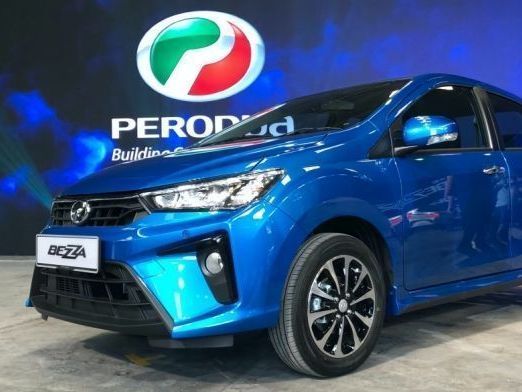
All-New Perodua Bezza Coming 2025: Built on Advanced DNGA Platform
LienJun 4, 2025
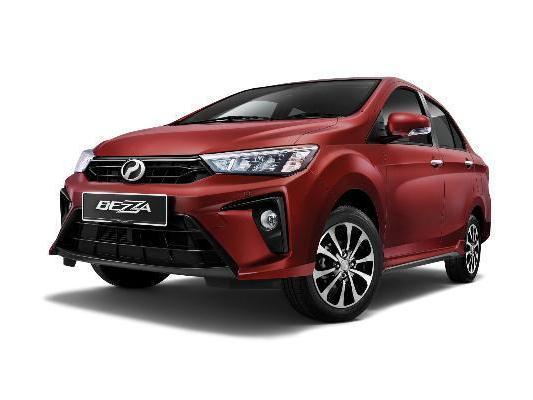
How Much is the Perodua Bezza? Tips for Purchase and Cost-effectivness
LienMar 25, 2025
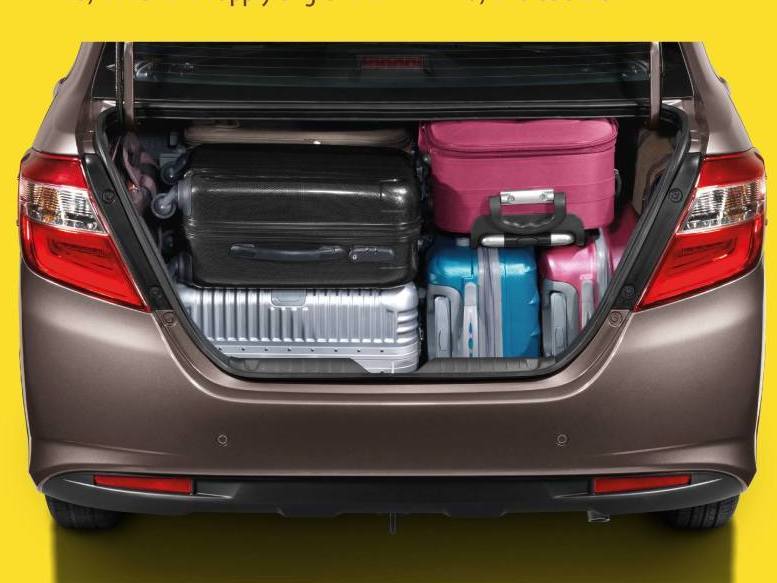
How big is the boot space of Bezza actually?
MichaelMar 12, 2025
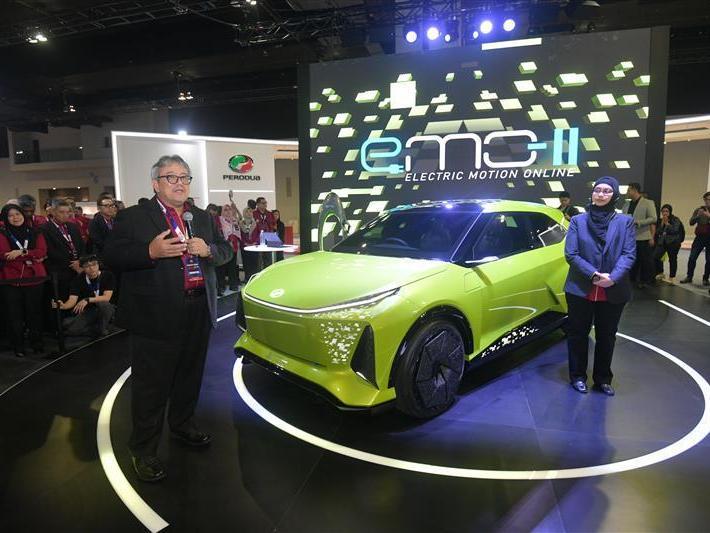
What will the new Perodua Car look like in 2025? What kind of changes will they undergo?
LienMar 3, 2025
View More





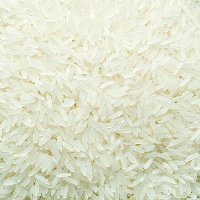






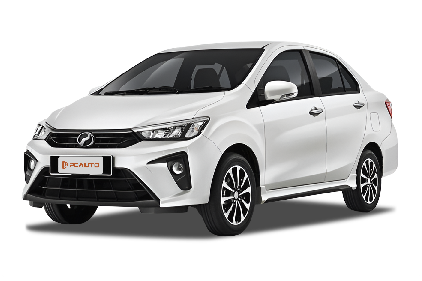





Pros
Cons